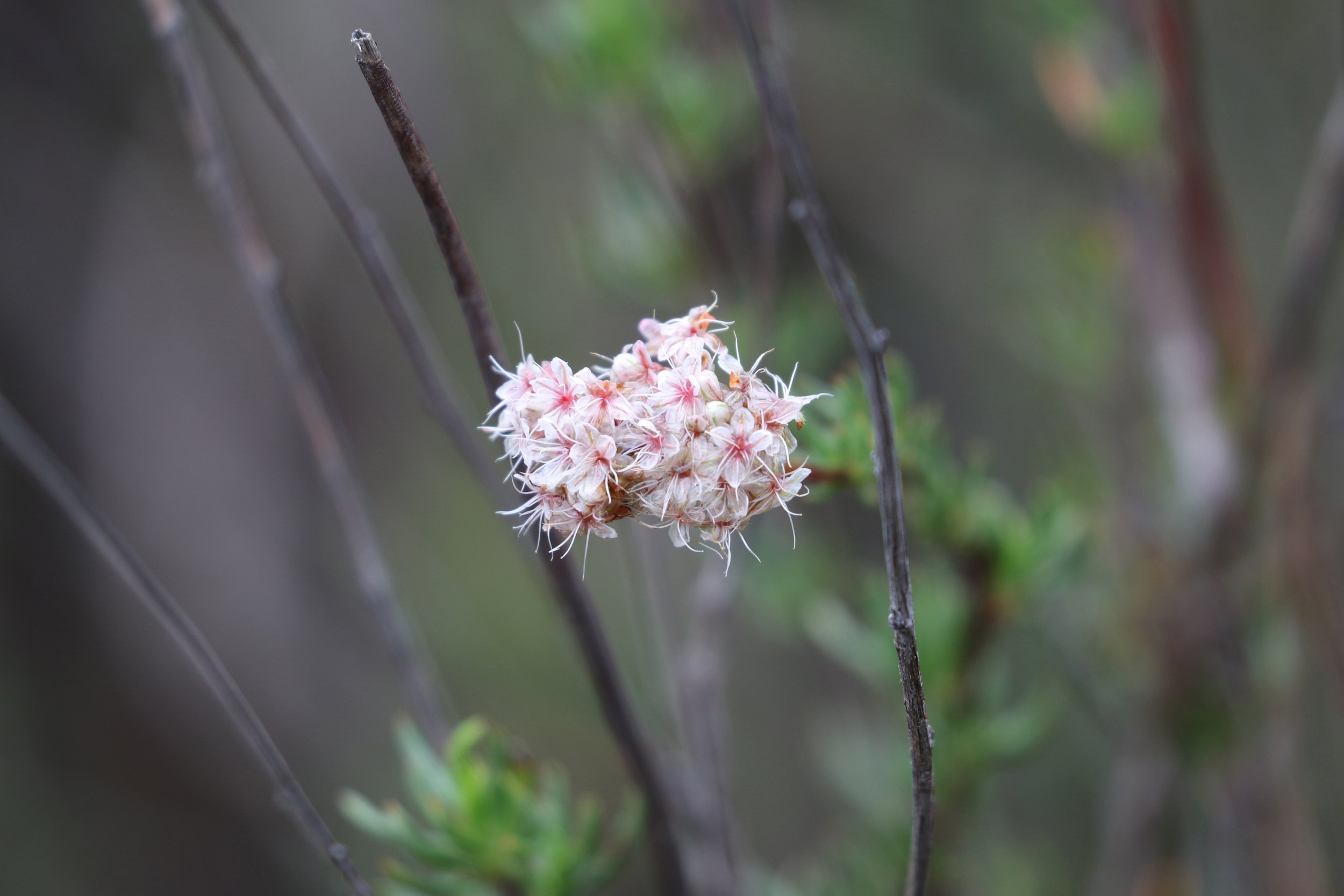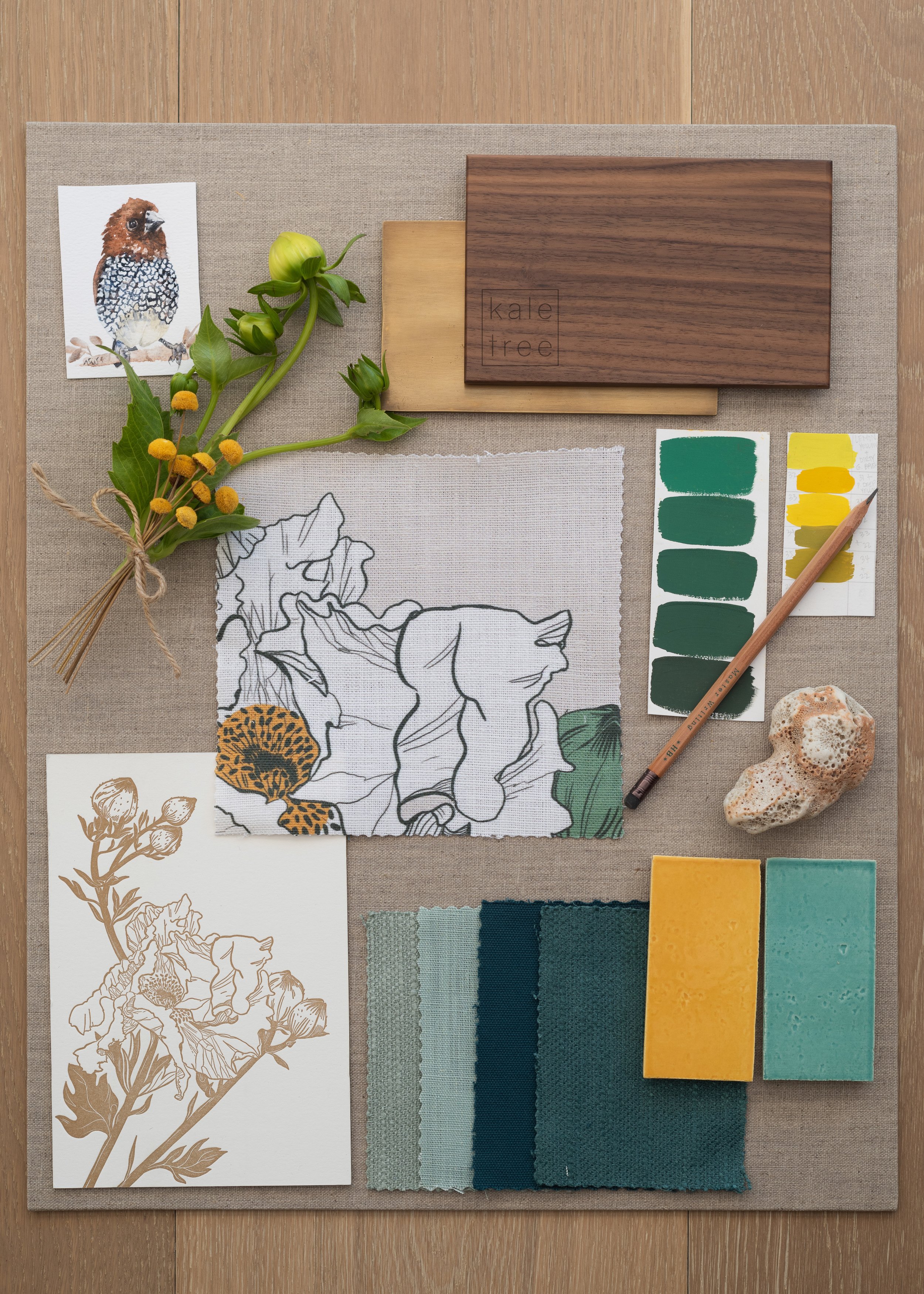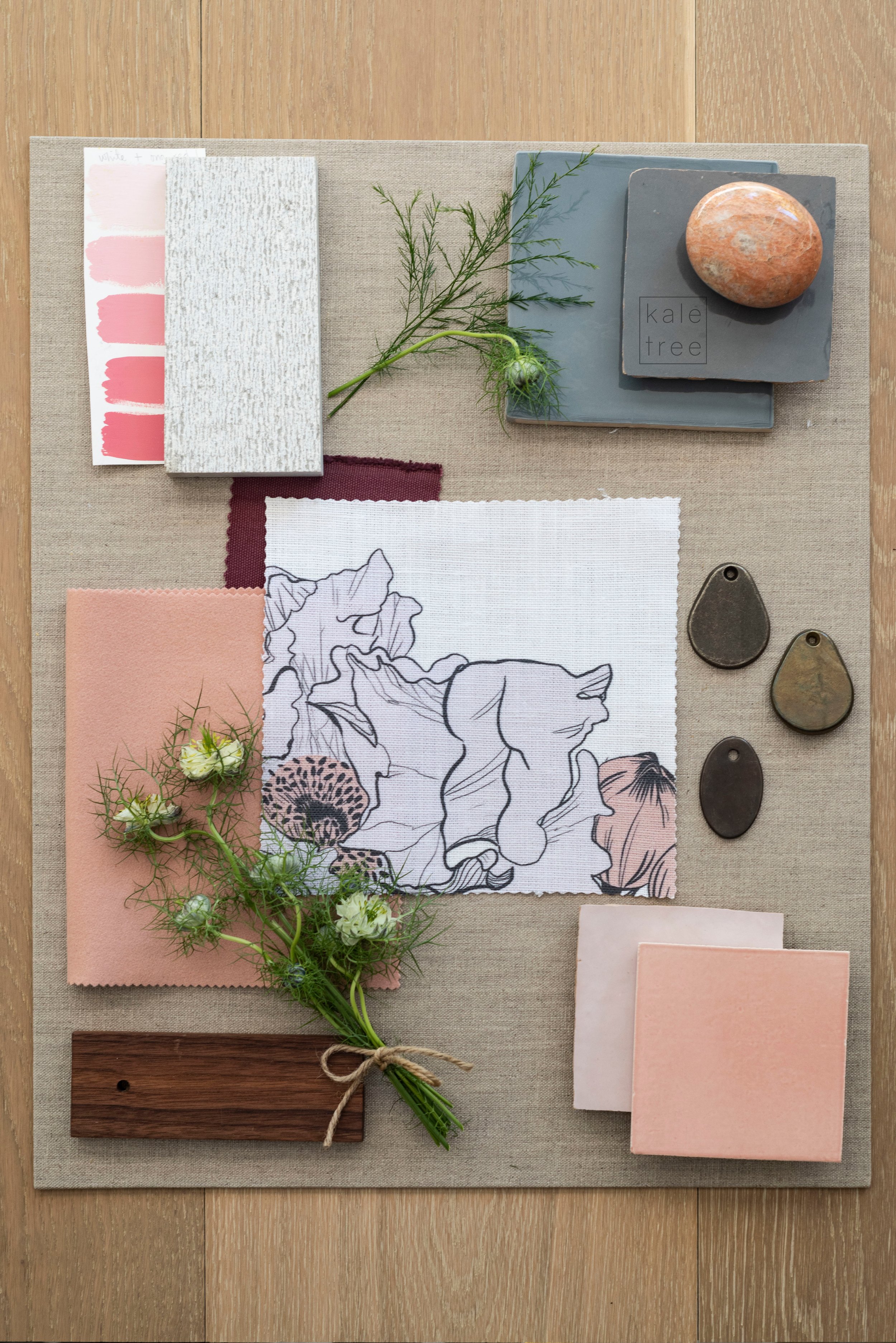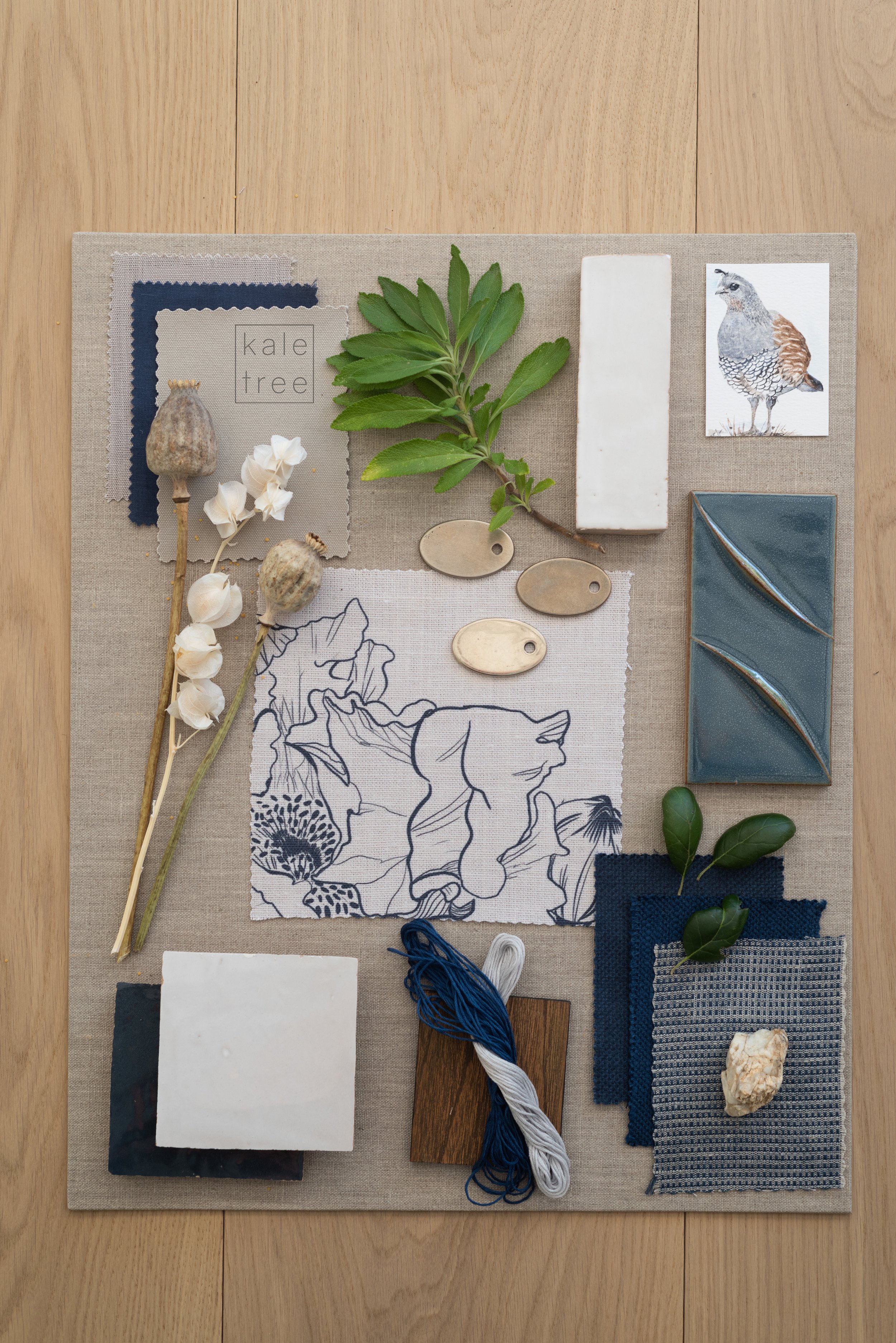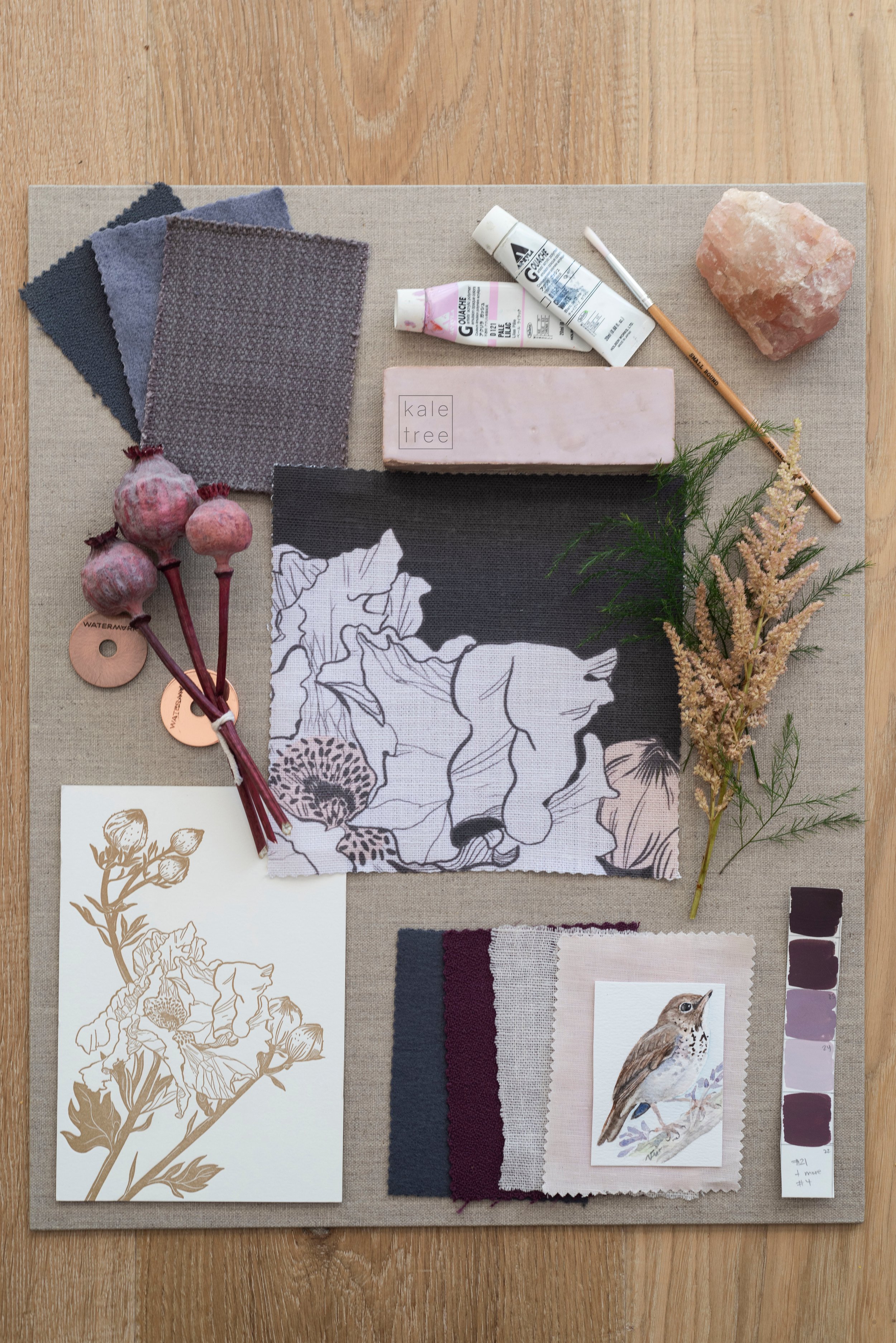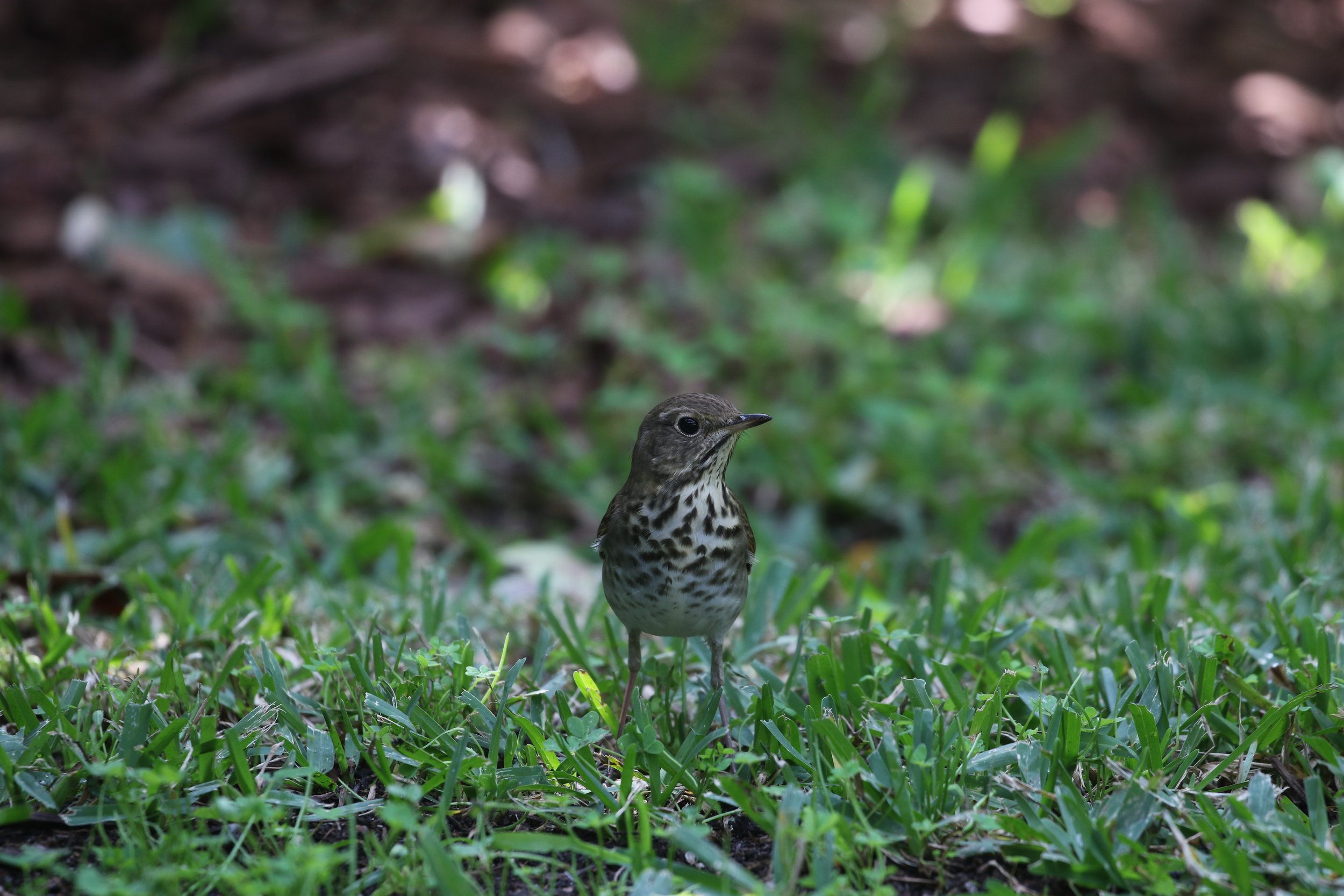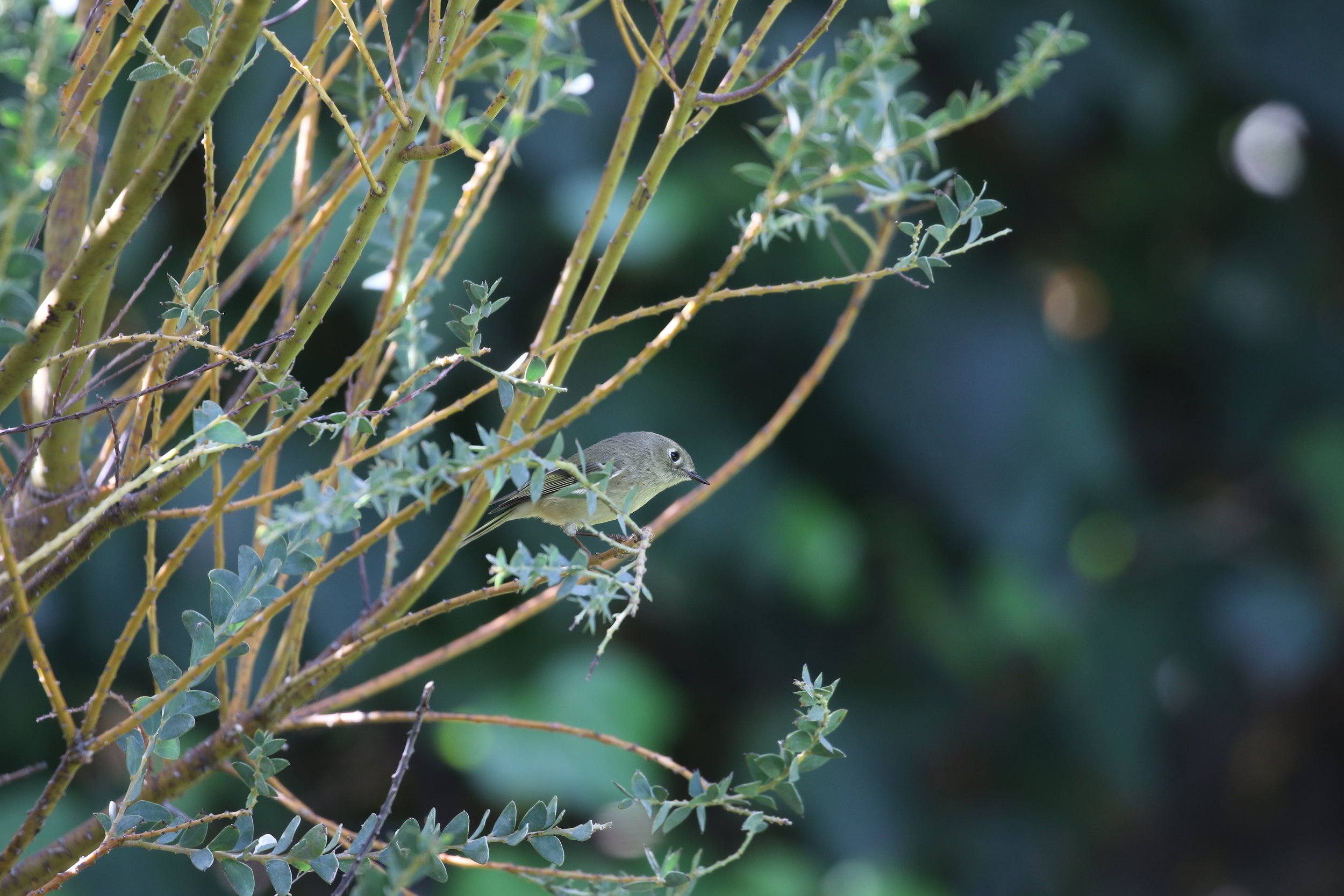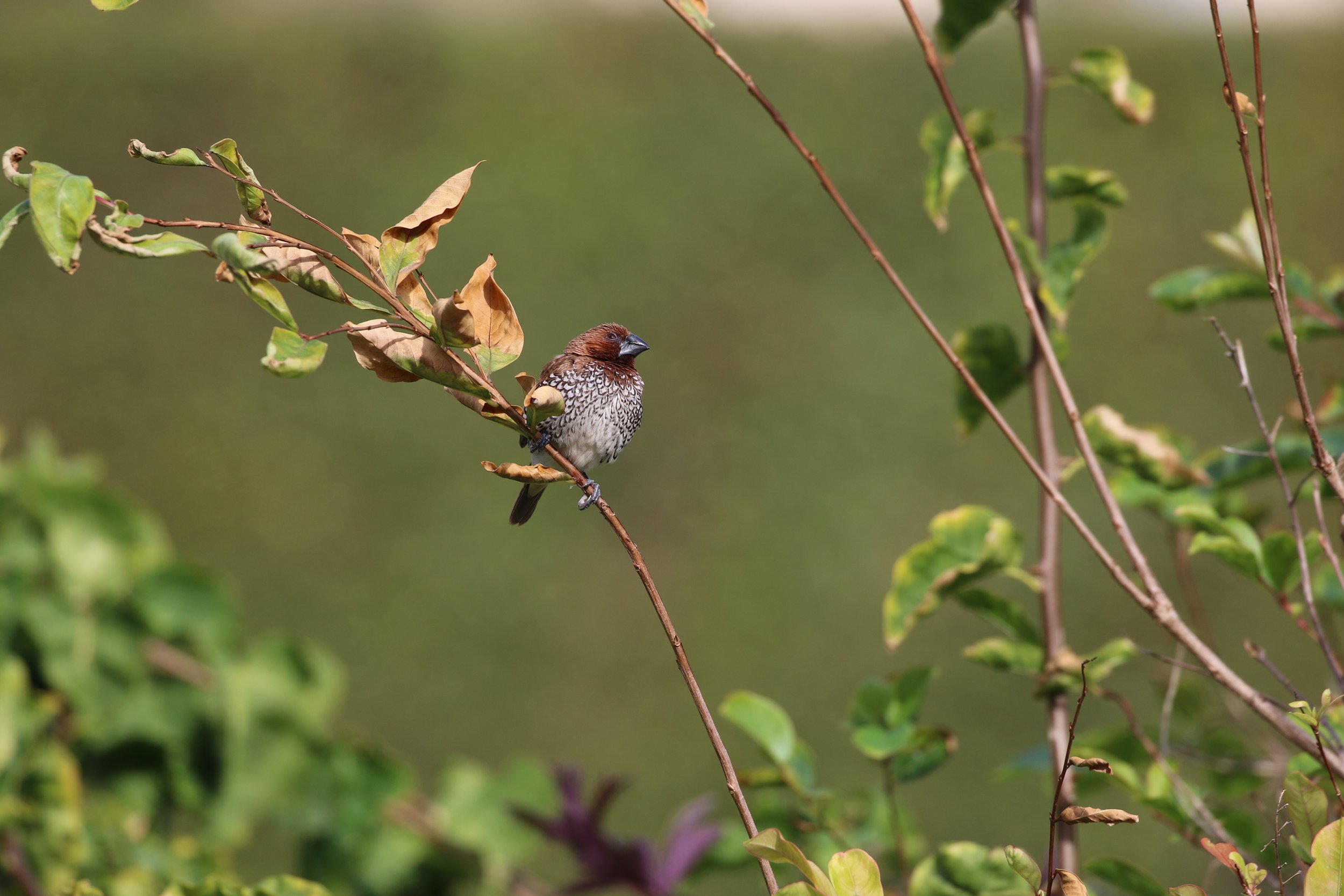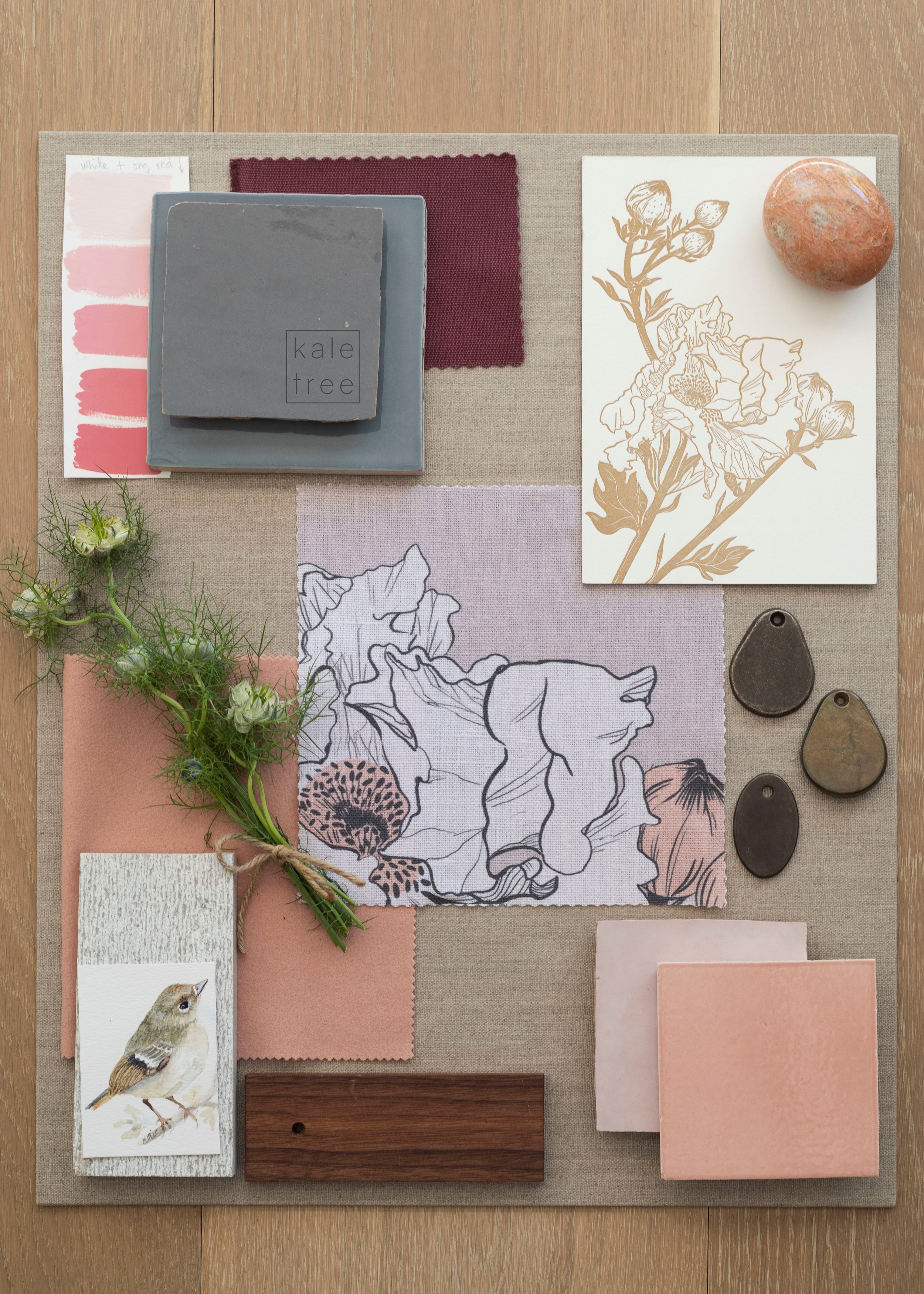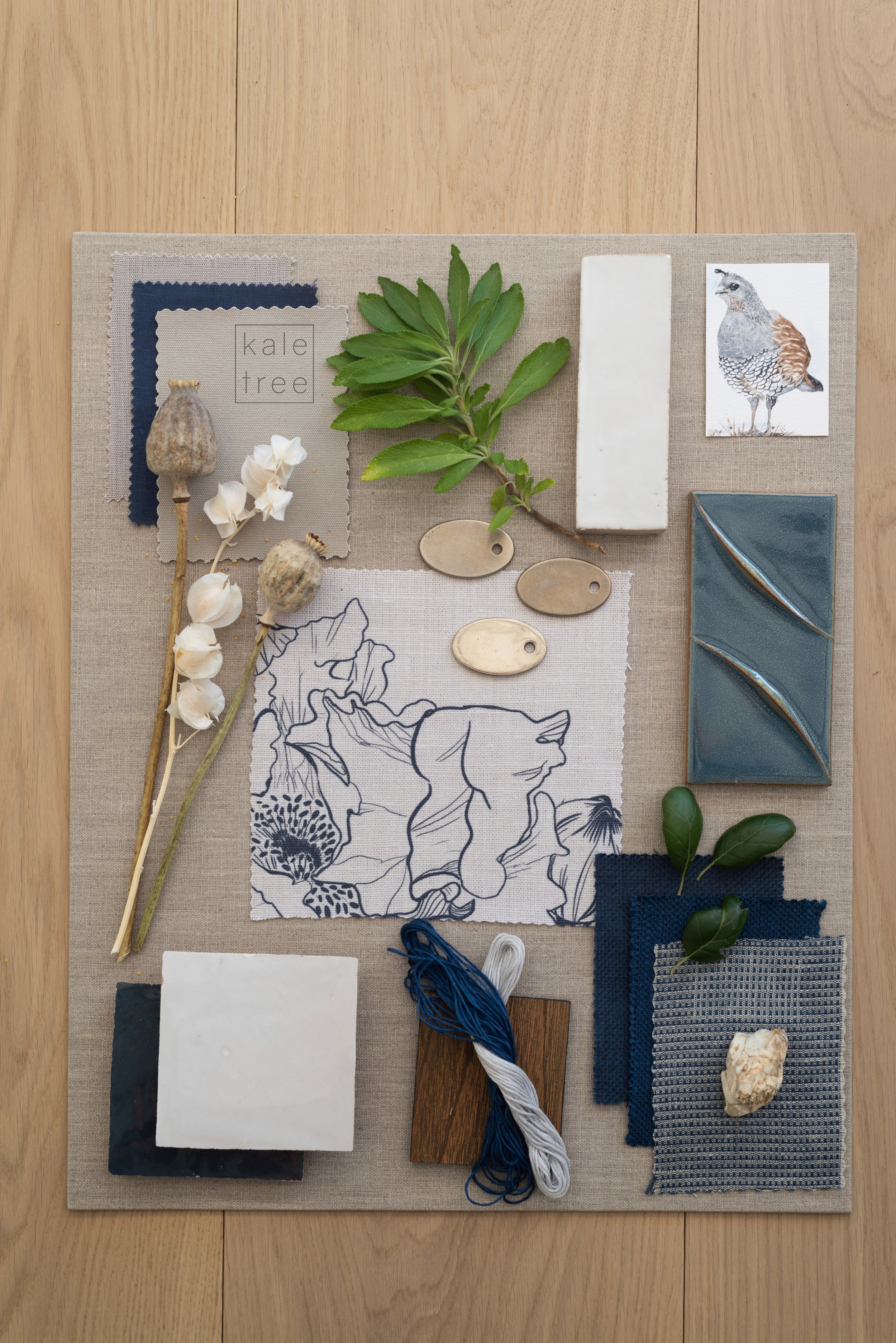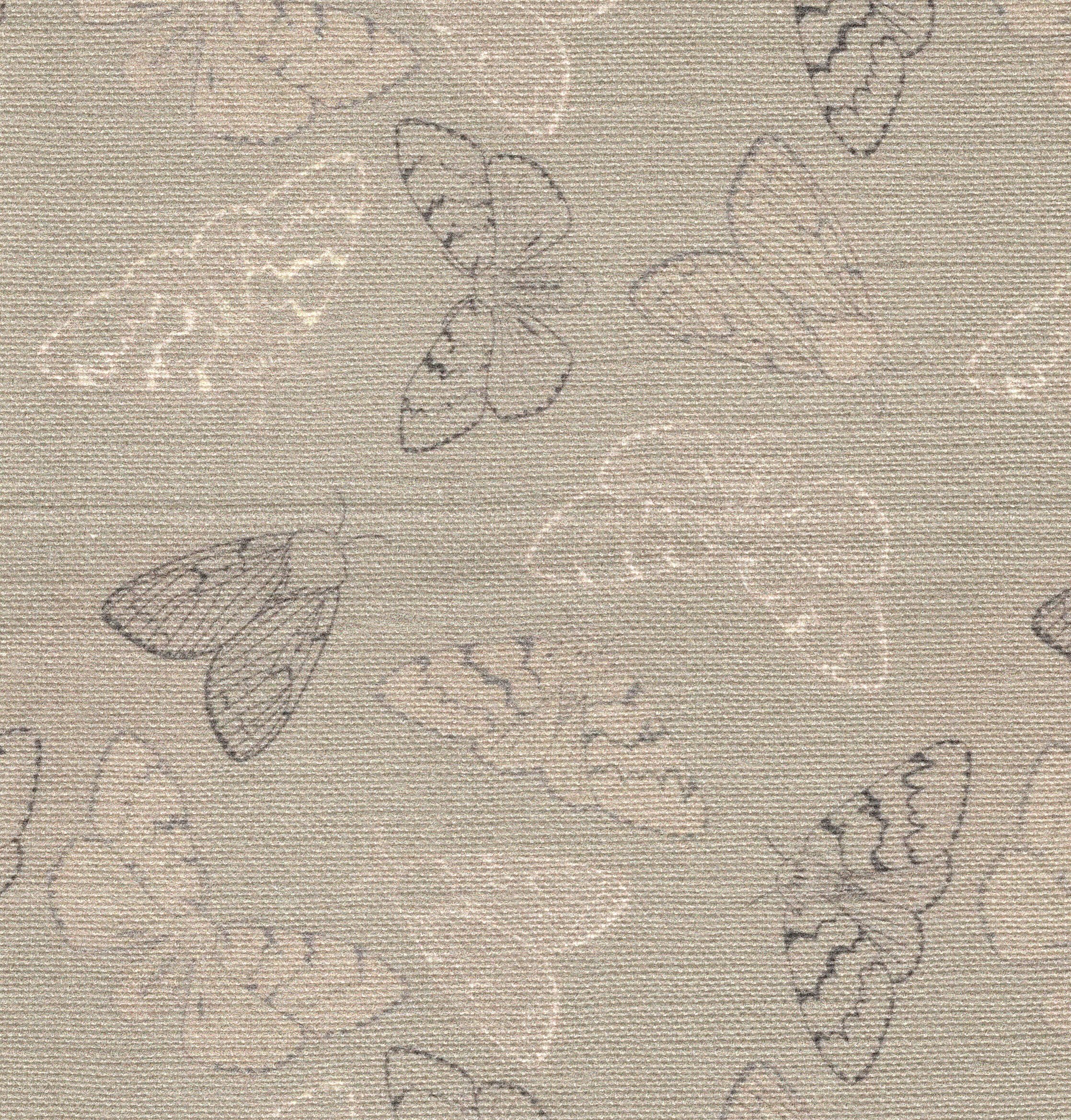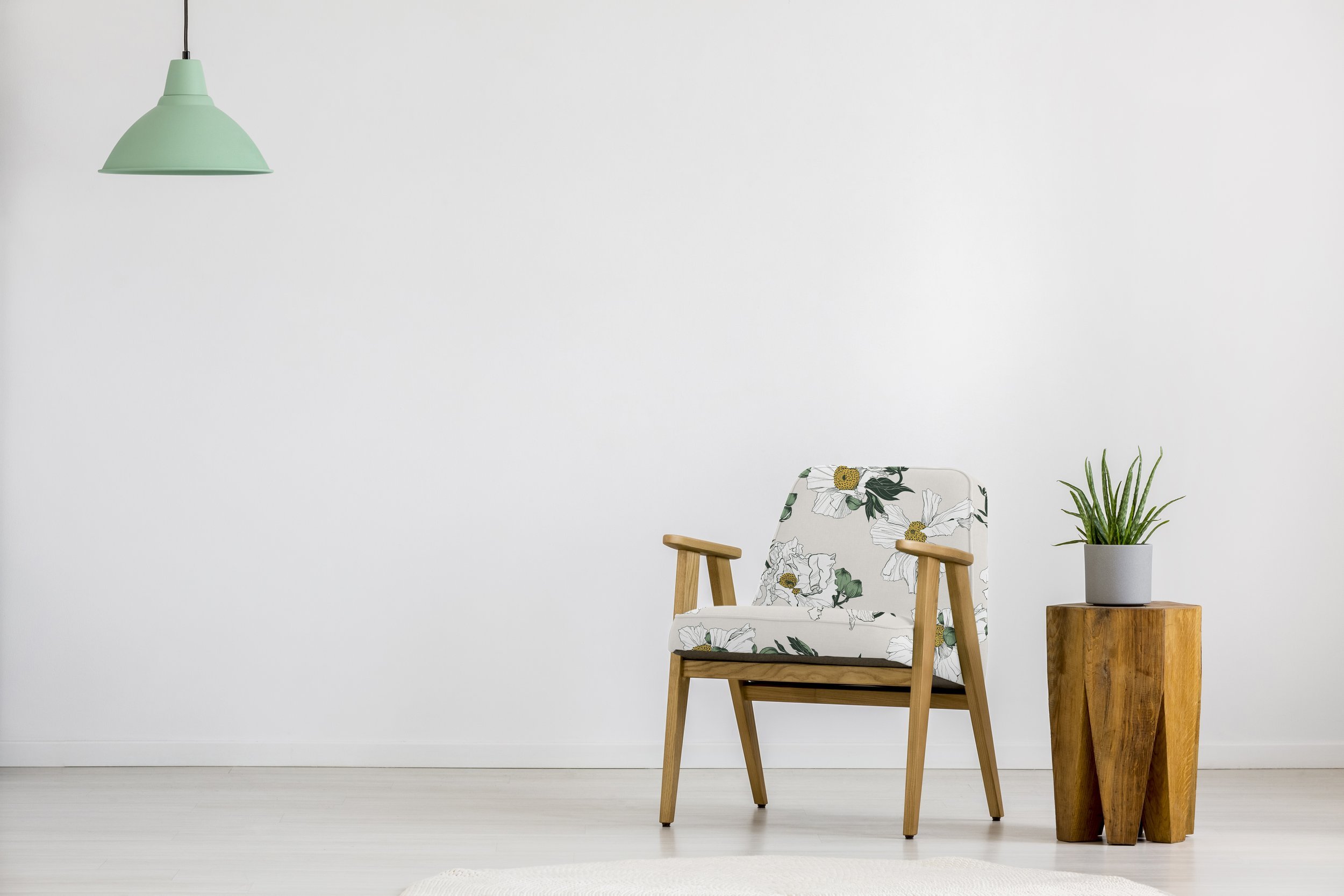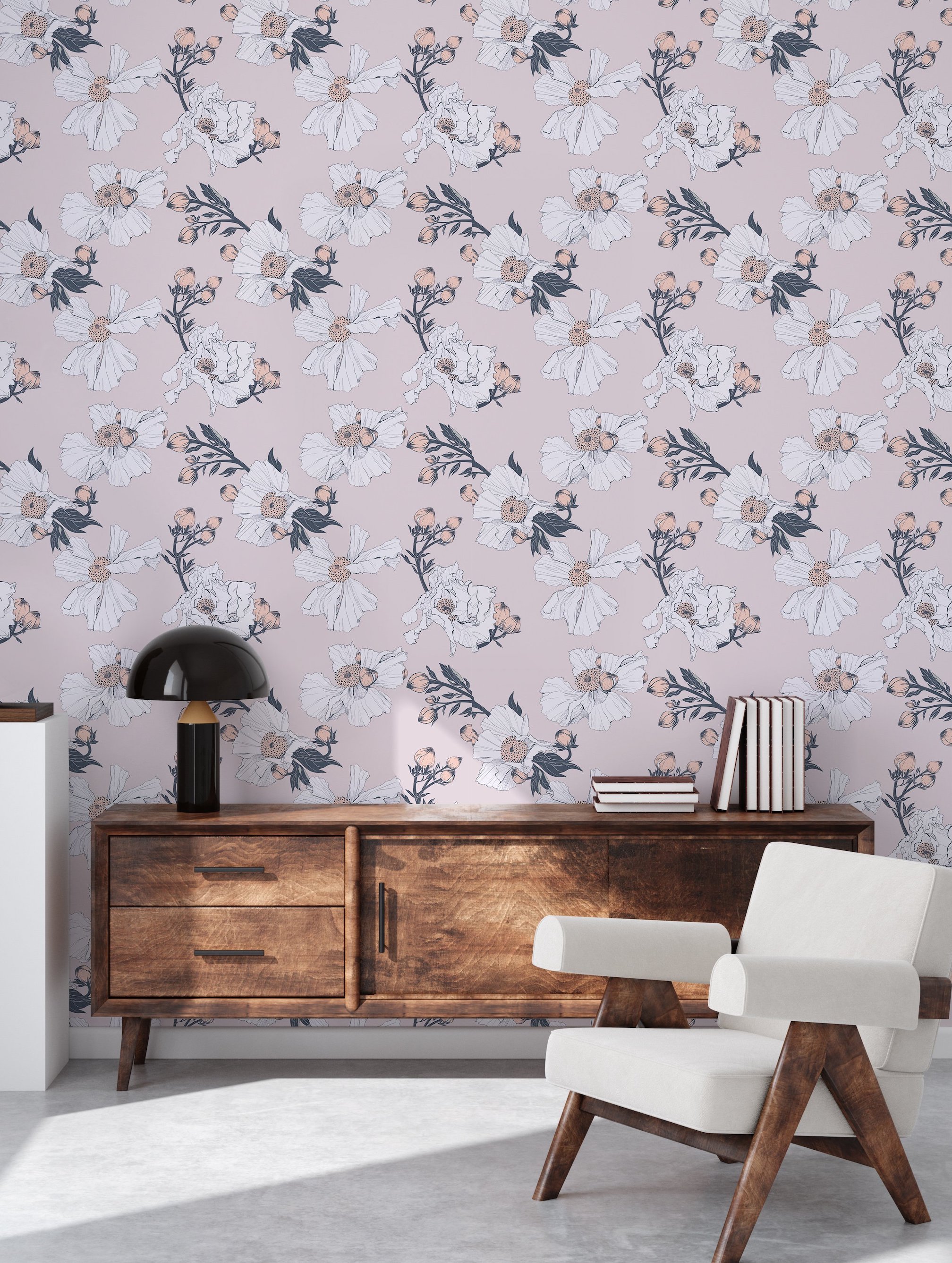California Native Gardening: Rewilding Los Angeles Landscaping
California Buckwheat (eriogonum fasciculatum)
With such an array of beautiful and unique plant life, it’s no wonder more and more people are opting to replace their lawns with California native gardens. The state of California is a biodiversity hotspot, with 61% of its plant life found nowhere else in the world. (1) There are many benefits to rewilding our gardens with California native plants. They can reduce our environmental footprint by using less water and creating habitats for local insects and animals, enriching the biodiversity of our local neighborhoods. We also have the pleasure of experiencing the emotional and mental health benefits that result from nurturing this environment and joyfully watching wildlife thrive amongst the beautiful wildflower blooms.
Coulter's Matilija Poppy (Romneya coulteri)
As a Certified California Naturalist, Sarah enjoys expanding her knowledge of Californian native flora and fauna. She recently completed the California Native Plant Landscaper Certificate Program offered by the Theodore Payne Foundation. Developed in partnership with The California Native Plant Society, LADWP, and The US Green Building Council, Los Angeles, this course covers the steps involved in planting and maintaining a California native landscape, such as identifying soil type, choosing plant communities, irrigation, and pruning.
Palmer's Indian Mallow (Abutilon palmeri)
The Theodore Payne Foundation's best practices suggest developing a California native garden as a 4-year process. Although at first, a California native garden will likely require the same amount of water (or possibly more) than a lawn, a California native garden is a long-term investment towards drought tolerance and increasing local biodiversity.
Yerba Santa (Genus Eriodictyon)
Year one involves the initial steps of creating a plant list, mulching, evaluating the runoff potential of a site, sowing wildflowers, and staking young plants. Year two is more about maintaining the garden by raking, pruning, watering, re-mulching, sowing wildflower seeds, weeding, and removing struggling plants. Year three involves seasonal maintenance such as watering, pruning overgrown plants, weeding, and replanting. And year four involves pruning with long-term shaping in mind, weeding, replanting, and watering.
An important course component involves identifying what plants best suit the site based on soil qualities and plant communities. There are generally three soil types, sandy, loamy, and clay which vary in their infiltration rate, water-holding capacity, nutrient-holding capacity, and aeration. Plant communities are groups of plants that typically grow together in natural environments.
California Native gardens usually derive from the following plant communities:
Woolly Bluecurls (Trichostema lanatum)
Coastal Sage Scrub are plants that tend to grow low to the ground; they include many aromatic plants such as Artemisia, Buckwheat, Salvias, and Matilija Poppy as well as Deerweed.
Miner’s Lettuce (Claytonia perfoliata)
Chaparral is thick, dense growth that contains a lot of diversity and tends to burn easily. This group includes Chamise, Scrub Oak, Buckwheat, Matilija Poppy, and Toyon.
Desert is a very diverse community of plants that exist at various elevations, such as Cacti, Joshua trees, Agave, Abutilon-Palmeri (Mallow), and Saltbush.
Cholla Cactus (Genus Clindropuntia)
Riparian is a diverse community of plant species that usually exist streamside, creating vital habitat for California wildlife; this group includes plants such as Jancus, Carex, and Ferns.
California Buckeye (Aesculus californica)
Pruning is commonplace in any garden to shape and control the size of plants, stimulate growth, and improve overall plant health. Folks have very different opinions about pruning a California native garden; some believe the landscape should grow wild and natural, while others regularly prune to control shape and growth.
Tip pinching is often performed in California native gardens; this involves pinching new growth off the tips of certain plants or right after flowering to stimulate fuller growth. For example, Ceanothus is a plant that benefits from tip pinching after flowering.
Bladderpod (Peritoma arborea)
Deadheading is the practice of removing dead flowers from plants before they go to seed, this can improve the appearance of plants and prolong the flowering season for some. Deadheading is sometimes discouraged in California native gardens as birds like to feed on seeds. Allowing plants to go to seed creates a natural food source, plus we get the pleasure of watching wildlife interact with the native plants in our yard. Toyon is an excellent example of this; its flowers bring berries which become food for Robins, Waxwings, Thrushes, and other visiting birds.
California Poppy (Eschscholzia californica)
Embracing a California native garden is a rewarding transformation with many benefits, including eventual drought tolerance, reduced maintenance, and the generation of natural habitat that increases the biodiversity in our neighborhoods. There is also the added benefit of joy we experience through the mindful activity of watching birds, insects, and animals live and thrive in the ecosystem that we have created within our yards.
Works Cited
(1) “Explore the Biodiversity Hotspots.” CEPF, https://www.cepf.net/our-work/biodiversity-hotspots.
(2) Theodore Payne Foundation. “California Native Plant Landscaper Certification.”
Sarah Barnard is a WELL and LEED accredited designer and creator of environments that support mental, physical and emotional wellbeing. She creates highly personalized, restorative spaces that are deeply connected to art and the preservation of the environment. An advocate for consciousness, inclusivity, and compassion in the creative process, Sarah has appeared in Architectural Digest, Elle Décor, Vogue, HGTV and many other publications. In 2017 Sarah was recognized as a "Ones to Watch" Scholar by the American Society of Interior Designers (ASID).
LA Textile: Organic, Sustainable and Recycled Fiber Fabrics
The Kale Tree design team had a great time visiting LA Textile at the California Market Center. We set out to meet the best new designers, manufacturers, mills, and printers in the heart of downtown Los Angeles and are excited about the new friends and connections we've made.
Organic textiles were at the top of our sourcing list. We're happy to report that there were an increasing number of suppliers with organic fabrics in varying weights and colors on the showroom floor. While natural and organic textiles were displayed from across the globe, we found a strong presence of Japanese mills with elegant certified organic cotton twills, batiste, canvas, and satin weaves.
We also connected with the folks at Cotton Incorporated and had an interesting chat about U.S. Cotton and the importance of traceability and transparency in cotton fiber textiles.
Recycled fiber textiles are another fabric we are especially interested in designing in our studio. While luxury-level recycled fiber textiles are still somewhat in limited offerings, we were pleased to connect with mills offering recycled polyesters, textiles made from recycled water bottles, and Seaqual fabrics made from recycled ocean plastics. We love to see mills working with recycled fiber yarns and especially support efforts to remove plastics from the ocean.
Custom-printed textiles are at the heart of what we do. We love fabric, and we find it incredibly rewarding to see our nature-inspired illustrations realized as drapery, bedding, pillows, and a host of other home decor items. At the LA Textile event, we were delighted to connect with like-minded folk who care about sustainability and wellness in design, sourcing, and production methods.
The Kale Tree design team is working on a new organic textile collection for 2023 featuring California native flora and fauna. Inspired by the local wildlife of our Southern California mountains, deserts, woodlands, and beaches, we look forward to sharing more with you soon!
Mule Deer of the Verdugo Woodlands
A California mule deer (Odocoileus hemionus californicus) and fawn.
Humans and deer have lived alongside each other for a long time. In the past, this relationship has been mutually beneficial. Native Californians would routinely carry out small controlled burns to clear underbrush and prepare pastures, which created fresh new growth that deer love to eat. In 1907, the first law to protect deer was introduced in response to the increased interaction between deer and California’s growing population. Laws protecting natural predators such as bears, mountain lions, and wolves took a long time to follow (the endangered species act did not protect bears until 1970), a factor that allowed deer numbers to increase.
Over time, the number of deer that reside in the Wildland Urban Interface (WUI), “the zone of transition between unoccupied land and human development,”(1) and some residential environments has increased. This is perhaps the result of a combination of factors such as; a reduced number of natural predators, the increasing population that lives in or near the WUI, and increased availability of food in well-irrigated environments such as gardens.
As a result, deer have increasingly adapted to live in urbanized environments, and a common issue that arises from living alongside deer is damage to trees and gardens. Deer love to graze on fresh shoots and leafy green plants, which can stunt the growth of young trees and disrupt fruit production. Plants that deer find “highly palatable,” such as roses, apple trees, and members of the Malvaceae family, such as mallow, hibiscus, and abutilon, are also commonly found in domestic gardens.
Cajun hibiscus (Hibiscus rosa-sinensis)
The Verdugo mountains are a beautiful and unique example of the Wildland Urban Interface within Los Angeles. This small mountain range is surrounded by urban development, leaving an isolated pocket of nature within the city. “You have what is almost like a federally protected forest that has survived human urban growth all around it. It’s like an undiscovered Atlantis.”(2) Some neighborhoods that touch the Verdugo mountains include Glendale, Whiting Woods, Oakmont, La Crescenta Highlands, Pasadena, and Altadena. The people who visit and reside here consider it a privilege to live in this unique area where an almost undisturbed natural environment meets the city.
A California mule deer (Odocoileus hemionus californicus) grazing.
As a Certified California Naturalist, Sarah loves exploring the hiking trails in and around the Verdugo mountains. This area is teeming with wildlife “except for the absence of grizzly bears, the wildlife in the Verdugos is much as it was 200 years ago.”(3) California has six subspecies of mule deer (Odocoileus hemionus), The California mule deer (Odocoileus hemionus californicus) is commonly found in the Verdugos and surrounding areas.
One way we can live alongside deer and maintain a beautiful garden is by planting deer-resistant plants, many of which also make a beautiful aesthetic or fragrant addition to our garden. While no plant is one hundred percent deer-proof, there are some qualities of certain vegetation that deer tend to avoid.
Golden Currant (Ribes Aureum)
Prickly or furry plants are a good place to start. Some examples include the Fuchsia flowered gooseberry (Ribes speciosum) and the California barberry (Berberis pinnata). The California barberry’s (Berberis pinnata) prickly leaves make it unpleasant to eat, but it also has beautiful yellow flowers, making it an appealing garden plant. The Fuchsia flowered gooseberry (Ribes speciosum) has gorgeous bright red dangling flowers that also attract hummingbirds to your garden.
Cleveland sage (Salvia clevelandii)
Deer also tend to avoid aromatic plants such as Sages (Salvia sp), Cleveland sage (Salvia clevelandii), and Hummingbird sage (Salvia spathacea) have a beautiful smell that deers dislike.
Tough and leathery plants can be hard for deer to chew. The California bush anemone (Carpenteria californica), a shrub with beautiful white flowers, and the Big berry manzanita (Arctostaphylos glauca) have tough trunks. Ground cover such as Emerald Carpet (A. uva-ursi X nummularia) is a leathery plant that grows densely on the ground, which can also reduce weeds.
California Poppies (Eschscholzia californica)
Fast-growing plants such as the California wild grape (Vitis californica) are a good option, as their rapid rate of growth allows them to recover from being grazed on as they grow out of reach from the deer. Spring wildflowers are also a good option as there are so many of them; even if a few are eaten in amongst all the new growth of the season, plenty still survive to make a beautiful garden.
A California mule deer (Odocoileus hemionus californicus) grazing.
If all else fails, a deer repellent spray can be applied to the plants in your garden. This non-toxic spray (which won’t hurt the deer or the plant) leaves a bad taste in their mouth, which is intended to slow grazing. There is a variety of homemade and store-bought options available.
An Oak Titmouse (Baeolophus inornatus) resting on a water dish.
Taking all of this into account, the remaining wildlife on Earth is a fraction of what it once was, “Extinctions have been a natural part of the planet’s evolutionary history. 99% of the four billion species that have evolved on Earth are now gone.”(4) We treasure day-to-day encounters with the wildlife that remain. Living amongst wildlife in the Wildland Urban Interface is a unique privilege; taking a break from the city and enjoying a hike in this pocket of nature is a wonderful gift. Being mindful of the wildlife in the Verdugo mountains can take the form of gently suggesting not to eat the plants in your garden (through plant choice or other options) or leaving a bowl of water out on hot summer days . This is a rewarding part of the experience of living and visiting here; in return, we get to live alongside these magical animals and watch them thrive.
A California mule deer (Odocoileus hemionus californicus) grazing.
Bibliography
“What Is the Wui?” U.S. Fire Administration, 8 June 2022, https://www.usfa.fema.gov/wui/what-is-the-wui.html.
“A Hidden Mountain Treasure in the City.” Los Angeles Times, Los Angeles Times, 19 May 1998, https://www.latimes.com/archives/la-xpm-1998-may-19-mn-51296-story.html.
“A Hidden Mountain Treasure in the City.” Los Angeles Times, Los Angeles Times, 19 May 1998, https://www.latimes.com/archives/la-xpm-1998-may-19-mn-51296-story.html.
Ritchie, Hannah, et al. “Extinctions.” Our World in Data, 15 Apr. 2021, https://ourworldindata.org/extinctions.
Other Resources
“Mule Deer (Odocoileus Hemionus).” CDFW, https://wildlife.ca.gov/Regions/6/Deer/Natural-History.
Kubey, Elizabeth. “Deer Resistant Native Plants.” California Native Plant Society, 4 Apr. 2018, https://www.cnps.org/gardening/deer-resistant-native-plants-5588.
Sarah Barnard, WELL AP + LEED AP, is a leading designer of personalized, sustainable spaces that support mental, physical, and emotional wellbeing. She creates highly personalized, restorative spaces that are deeply connected to art and the preservation of the environment. An advocate for consciousness, inclusivity, and compassion in the creative process, Sarah has appeared in Architectural Digest, Elle Décor, Vogue, HGTV, and many other publications. In 2017 Sarah was honored as a “Ones to Watch” Scholar by the American Society of Interior Designers (ASID).
Birdwatching as mindfulness: Creative connections within the bird watching community.
The benefits of looking at nature are everywhere, no matter where you live. Outdoor recreational activities such as hiking and being in nature promote feelings of well-being. Recent research by academics at the University of Exeter, the British Trust for Ornithology, and the University of Queensland suggests that birding, in particular, has mental health benefits. Researchers in the UK recently determined that people who saw more birds in their daily lives experience less stress and depression. Bird-watching is a practice that encourages mindfulness and patience. Simply watching a bird feeder can be beneficial for your mental health.
Birding also benefits your mental health through the community and friendships that it creates. A love of birding connects people from all walks of life and is what initially drew interior designer Sarah Barnard, WELL AP + LEED AP, to the artwork of Vivienne Edwards.
The watercolor paintings of small birds included in several of our mood boards for the Matilija Poppy Textile and the Mallow Textile are by the artist Vivienne Edwards. Vivienne is based in South Africa and makes small watercolors of birds that she encounters in the natural environment around her. Sarah discovered Viviennes' work one day by chance, drawn to the intimacy of their small size (2.5 x 3.5 in) and how they reflect the artist's relationship with her natural surroundings.
Sarah is an avid birder and felt that Vivienne's paintings would be a special addition to her art collection. Sarah commissioned a small set of paintings from Vivienne based on photographs Sarah took of favorite birds in her garden.
These magical birds are featured in a series of Kale Tree mood boards, whose nature-inspired luxury eco fabrics incorporate biophilic prints inspired by the intersection of art, design, and nature. Sarah thought these paintings contributed to the overall feeling of these mood boards, which feature a series of natural materials and textures that help visualize the collection of objects that make up an interior space.
The bird featured in this Kale Tree mood board for the Matilija Poppy Textile in Putty is a Ruby-crowned Kinglet (Regulus calendula); this is a tiny, very cautious bird that can be quite timid. Sarah has mainly spotted the Ruby-crowned Kinglet in the Acacia cultriformis tree in her garden, which it uses as a safe passage to the water bowl. It is a fairly solitary bird that does not stay out in the open for too long. Its ruby crown is very subtle, making it difficult for her to identify at first, and she was very happy when she did. The hand-drawn pattern of this floral textile is inspired by Matilija Poppies (Romneya coulteri), a favorite California native flower.
The Hermit Thrush (Catharus guttatus), is a bird with which Sarah feels a real fascination and kinship. Of all the songbirds, the Hermit Thrush is considered to have one of the most beautiful songs. The first time Sarah saw a Hermit Thrush, she was overcome and entranced by the beauty of this bird which felt like it had a magic quality. The Hermit Thrush is quite solitary; it moves along the edges of the garden with cautious stealth, so it feels like a special moment when it is spotted. Hermit Thrushes seldom visit backyards making this sighting and painting all the more special, a beautiful and meaningful addition to the Matilija Poppy Textile (Midnight) mood board from Kale Tree.
The mood board for the Matilija Poppy Textile (Bluestone) features a painting of the California Quail (Callipepla californica), the California state bird. This bird has beautiful feather patterns and enchanting qualities similar to the hermit thrush. Sarah had only ever seen California Quails in the desert until she moved to her new house, where she saw a pair walk across her patio one day. This experience was delightful and magical as it possibly meant they were nesting nearby. Sarah intends to plant a quail bush (Atriplex lentiformis) in her garden to encourage the birds to stay a while.
The painting featured in the mood board for the Matilija Poppy Textile (Natural) is of a Scaly Breasted Munia (Lonchura punctulata). You can usually find this small songbird in grasslands, gardens, and fields; the scaly spots on its underbelly and the color palette of its feathers compliment the stamens in the center of this poppy textile. Sarah first saw this bird in her garden and had never seen a bird like it before. She was surprised to learn that it was an introduced species from South East Asia. On watching this bird, she was struck by how familial and social they are; they are hardly ever seen alone and are often spotted sharing food and space. The Scaly Breasted Munia is also a lot less timid around humans, usually happy to sit and listen to a little bit of a human-to-bird conversation.
A painting of a Bewick's Wren (Thryomanes bewickii) is paired alongside a series of natural materials in the mood board for the Mallow Textile (Evening Mauve). The Bewick's Wren was originally one of Sarahs' favorite birds and has been in Sarahs' life for a long time. At her last house, a mother Bewick's Wren, taught her babies to eat suet cake from her bird feeder. The mother wren would also leave baby birds in a bush in Sarahs' garden while they went to forage, allowing her to spend some time with these usually solitary birds. Although they are usually found in dry bushy areas, the Bewick's Wren is also at home in gardens and parks in suburbs and cities. Its ability to live in natural and built environments creates a lovely allegory reflecting the design philosophy behind this floral fabric.
In this last mood board, a painting of an Ash-throated Flycatcher (Myiarchus cinerascens) accompanies a swatch of the Mallow Textile (Midnight Forest). These birds are often found in dry places, and as a result, they don't need to drink much water. Instead, they get the water they need from their food. Sarah often sees these birds in her garden, but explains that patience is required as they are usually on a perch somewhere, sitting, waiting, and surveying for insects that they catch in mid-flight.
Vivienne Edwards is a self-taught artist from South Africa who loves to work with the unpredictability of watercolors. She is fortunate to live in a wildlife-rich region with abundant bird life and wetlands. Her work takes inspiration from the small creatures in the natural environment around her, going about their daily lives with such purpose and energy. It is often a show of vulnerability from this wildlife that prompts what she decides to paint, such as a Sparrow delicately picking a sprig of parsley for its young.
Sarah and her team love working with other artists, especially those who celebrate the beauty of nature and inspire joy through their work.
Bibliography
“Beautiful Birding: 7 Mental Health Benefits of Bird Watching.” Happiness.com, 27 Jan. 2022, https://www.happiness.com/magazine/art-culture-leisure/mental-health-benefits-of-bird-watching/.
Leahy, Christopher W. “Teaching Your Mind to Fly: The Psychological Benefits of Birdwatching.” Princeton University, The Trustees of Princeton University, 31 July 2021, https://press.princeton.edu/ideas/teaching-your-mind-to-fly-the-psychological-benefits-of-birdwatching.
Ray, Heather. “A Dose of Nature: Why Birding Will Boost Your Mental Health.” Birds and Blooms, Birds and Blooms, 27 Apr. 2022, https://www.birdsandblooms.com/birding/birding-basics/birding-health/#:~:text=Researchers%20in%20Kentucky%20found%20that,beneficial%20to%20your%20psychological%20health.
Sarah Barnard is a WELL and LEED accredited designer and creator of environments that support mental, physical and emotional wellbeing. She creates highly personalized, restorative spaces that are deeply connected to art and the preservation of the environment. An advocate for consciousness, inclusivity, and compassion in the creative process, Sarah has appeared in Architectural Digest, Elle Décor, Vogue, HGTV and many other publications. In 2017 Sarah was recognized as a "Ones to Watch" Scholar by the American Society of Interior Designers (ASID).
Crazy Plant Ladies: Radical Naturalists and Environmental Preservation
As a team comprised of plant collectors and nature lovers, many in the Kale Tree studio are no stranger to the phrase "crazy plant lady." Crazy plant lady has been re-contextualized among plant enthusiasts to describe some of the most influential and admirable environmentalists, naturalists, and plant lovers. Many adopt the term as a point of pride. In the design field, "crazy plant ladies" have paved the way for advances in sustainability with far-reaching effects, including an influence on biophilic and eco-friendly interior design practices. To celebrate a few of these historic figures, we hope to share some information and appreciation for a few notable women.
Diana Beresford-Kroeger
Diana Beresford-Kroger is a medical biochemist, botanist, and author, who uses her range of knowledge to educate and promote environmental preservation. Beresford-Kroeger has advocated for and educated around the medicinal benefits of trees and plant life, sharing information on the benefits and effects of various vegetation for health. To fight climate change, she developed a "bioplan" with tree planting at its foundation, aiming for everyone on earth to plant six native trees over six years in their communities.
Her home arboretum boasts a vast collection of various hardy and rare tree specimens. She is known for freely gifting seeds and saplings to help spread and replant these trees, many of which were used for a range of benefits by indigenous communities before being demolished through colonization.
Some of the more unique theories from her work have foundations in the Celtic belief system she was raised with, and many of the medicinal benefits of plants she has studied are rooted in Celtic traditions, which may also contribute to her profound respect and appreciation for trees. One of her more intriguing beliefs, while disputed, is that the healing benefits of trees are released through their aerosols, offering curative properties when inhaled. Beresford-Kroger often touts the healing benefits of time spent in forests, which she in part attributes to these aerosols. While some desire more support for these claims, many of the benefits of time among trees are widely documented. Her all-encompassing perspective, and impressive scientific research, have made her a widely celebrated figure, offering an expansive view of the power of nature.
Lorrie Otto
Lorrie Otto was an environmentalist, speaker, and author. She advocated against the use of pesticides after being alarmed by dead birds near her Milwaukee home, which paved the way for the nationwide ban on DDTA.
Otto was a proponent of natural landscaping and biodiversity, speaking against the water waste of lawns and encouraging people to transform their yard spaces that conserve wildlife and their natural habitats.
Her messaging inspired the organization "Wild Ones," a group that promotes sustainable and environmentally friendly landscaping. Nine people founded the group after they attended one of Otto's lectures. As a result, natural landscaping has seen a progressive increase in popularity, making its way to the rule and not the exception in many personal garden spaces. The widespread normalcy and embrace of natural landscaping and its far-reaching positive effects on the environment may often be attributed to Otto's advocacy efforts.
Beatrix Farrand
Beatrix Farrand was a founding member of the American Society of Landscape architects and the only woman in the original group. In addition to being the first female landscape architect in America, her renowned landscapes appeared in private residences, the White House, and a range of parks, botanic gardens, and campuses.
She advocated for the importance of nature to improve personal well-fare and spoke about the value of public garden spaces. Her work was known for considering the relationship between natural and built spaces, using landscaping techniques to improve aesthetics in architecture. In addition, she was known for her engineering ability, creating intricately designed gardens and often focused on native plantings. Farrand's visionary approach and widely celebrated landscapes helped pave the way for many women in the field.
While countless women have contributed to environmental preservation through their love of nature, these are a few who greatly inspire our studio. Their innovative approach to preserving, celebrating, and sharing nature encourages out-of-the-box thinking and emphasizes the importance of education. A common understanding between these and most "crazy plant ladies" is that we are participating members of our natural environments. Nature is something to be shared, cherished, and preserved. We hope to carry these themes in our studio and share our passion for nature throughout our designs.
Kale Tree + Healthy Home Decor
Butterfly Dreams Bed by Kale Tree.
Inspired by nature, fueled by community, and made with love. At Kale Tree, we aim to uplift the global community through nature-inspired home design. The source of our namesake is a beautiful, dark green shrub with kale-like curly leaves, known as Polyscias guilfoylei. This kale-like tree is resilient and hardy despite its delicate appearance. Like many of us, it takes time to grow but needs little coddling to succeed. The beauty, versatility, and self-sufficiency of this leafy evergreen aptly represents Kale Tree and our mission to promote health and well-being by strengthening our connection to nature, inside and out.
Moth Textile by Kale Tree.
Based in Southern California, we believe that our home should reflect what calms and inspires us. We find endless inspiration from the surrounding mountains, beaches, and desert landscapes. Whether it's the California native Matilija Poppy or a coastal Mangrove Tree, we extend our love of nature through thoughtful biophilic home design.
Kale Tree is comprised of nature-loving creatives who value community and personal wellness with a shared commitment to conscious, sustainable home design. Founded by WELL- and LEED-accredited interior designer and naturalist Sarah Barnard, Kale Tree aspires to improve accessibility to ethically produced, eco-friendly home decor while making the conscious effort to promote wellness through socially and environmentally responsible home design.
Matilija Poppy Textile - Natural by Kale Tree.
We believe that individual wellness is directly connected to nature. Biophilic home decor has the potential to evoke similar mood-boosting effects to spending time outdoors. Our studio understands the importance of uplifting the well-being of each other and places equal value on lasting environmental health. Working from a cosmopolitical standpoint, we aim to uplift our community through closeness to nature by designing our products with conscious intent, considering the environment at every stage of our production process.
Mallow Textile in Dusty Dawn by Kale Tree.
Natural and Organic Fibers
Natural fibers provide a unique tactile experience and biodegrade more naturally over time. Kale Tree offers products made from natural and organic materials, including textiles made from Belgian Linen, New Zealand Wool rugs, and furniture made from sustainable hardwoods.
Mangrove Rug by Kale Tree.
Vegan Choices
As naturalists and animal lovers, we understand the importance of choosing products that align with your values. All of our area rugs are available in Bamboo Silk, a vegan fiber with a soft sheen derived from bamboo plants. Our textiles and wallpapers are made from cruelty-free plant-derived materials.
Mallow Wallcovering in Midnight Forest by Kale Tree.
FSC certified Hardwoods
Our furniture is handcrafted in Los Angeles from Forest Stewardship Council (FSC) hardwoods. FSC certification ensures that the hardwoods we use are sourced in an environmentally responsible manner to help support sustainable forest management.
Matilija Poppy Wallpaper - Putty by Kale Tree.
Greenguard Gold Certified
We believe that a healthy home is a happy home. Kale Tree's PVC-free, low-VOC wallcoverings help maintain healthy indoor air quality and are Greenguard Gold Certified.
California native Lupine and Salvia. Photo by Sarah Barnard.
Kale tree works closely with a team of like-minded artists, designers, and artisans from diverse backgrounds to create healthful, ethically produced goods inspired by the intersection of art, design, and nature. All goods are made with love and designed with the intent to bring beauty, health, and joy to you and your home.
Night Shift Pollinating: the Magic of Moths
Nature enthusiasts and scientists alike are well aware that pollination is crucial for environmental well-being. Insects such as bees and butterflies have experienced a well-deserved moment in the spotlight for being the primary sources of pollination for our environment. However, this could be a case of accidental bias on our part. New research has found that multiple species of magnificent yet harshly misunderstood moths are hard at work while we are asleep, picking up the pollination shift where bees, butterflies, and other daytime pollinators left off.
Historically, moths and other nocturnal pollinating insects have not been included in mainstream research. Because of this accidental oversight, we knew very little about the extensive pollination efforts of these mysterious nocturnal creatures. However, new research on nocturnal pollination has allowed us to turn our attention and appreciation towards the moth, a beautiful and diverse insect species that we now know is part of the pollination team. The Royal Society conducted a study in which they swabbed pollen from 883 moths. The scientists found that 381 moths out of their sample contained pollen from more than one plant species on their fuzzy underbellies. These results suggest that moths visit and pollinate multiple plants at night and are highly influential in wild plant pollination. Moths pollinate some of the same plants visited by bees and other daytime pollinators. This new research shows that bees, butterflies, and moths work in a holistic combined effort towards pollination and environmental wellness.
Moths tend to pollinate flowers with strong, sweet smells emitted at night. They are especially attracted to flowers that produce ample nectar that is easy to access through long, tubular flowers. They are most attracted to flowers with pale white and dull red colors, hues of pink and purple, and large petals with clusters.
The responsibility of pollinating our planet falls on the shoulders of many species, as well as Earth's natural elements of wind and water. Protecting our planet's natural pollinators improves the health of our ecosystem and, in turn, improves our well-being. Pollinators are not only crucial to our environment, but they are also incredibly essential for human life and function. The United States Environmental Protection Agency states, "pollinators provide humans with one in every three bites of food we eat, cotton to make clothing and other items we depend on, and habitats and food for countless other animals.
Entomology Moth Drawer by Tradescant & Son depicts tattered and delicate hand drawn moths, some showing their age to create a raw and honest depiction.
As we learn more about moths and their vital role in the holistic pollination of our planet, we become better equipped to protect them and Earth's pollination systems as a whole. There are many steps you can take to help protect moths and promote pollinator well-being:
Moth textile by Kale Tree celebrates the beauty of moths in a 100% linen fabric.
While most pollination-protecting efforts can help the wide variety of pollinating species, one hazard unique to pollinating moths is light pollution. Avoid the use of lighting in your garden as artificial lights can disorient moths, impairing their abilities to find mates, protect themselves from predators, and find flowers to pollinate.
Plant moth-approved flowers in your garden that bloom in a variety of seasons
Plant in "clusters" so that your nighttime pollinating visitors can easily access flowers to pollinate in your garden
Eliminate the use of pesticides and herbicides.
Kale Tree Studio gathers much inspiration from the natural scenery around us to create our products, and as such, our products are made with a commitment to sustainability and environmental wellness. For example, our moth rug is inspired by the neutral creams and toasted grey hues of a moth's wing, available in Bamboo Silk or 100% New Zealand Wool. As a studio with a mission to promote health and well-being, Kale Tree cares deeply about protecting all of Earth's natural pollinators. With newly available research, we can help moths achieve their much-deserved spotlight on the pollination stage, along with their daytime pollinating friends.
Damaged Lace by Tradescant and Son was inspired by the ethereal beauty of pre-loved antique lace combined with the raw honesty of the destruction of lace eating moths.
Resources
CNN Health. “Moths play a vital role in pollinating flowers and plants, new research suggests.”
The Royal Society Publishing. “Nocturnal pollinators strongly contribute to pollen transport of wild flowers in an agricultural landscape.”
U.S. Forest Service. “Pollinator Syndromes.”
Xerces Society. “The Night Shift: Moths As Nocturnal Pollinators.”
United States Environmental Protection Agency. “Protecting Pollinators.”
Pollinator Partnership. “About Pesticides.”
Style & Sustainability: Eco-Friendly Decor Tips to Upgrade Your Space
Kale Tree Shop was recently featured in a Redfin article outlining how to make your home decor more eco-friendly. Take a look at the tips below!
Kale Tree was recently featured in a Redfin article outlining how to make your home decor more eco-friendly. Take a look at the tips below!
Being more conscious of your decorating decisions doesn’t have to be difficult. In reality, eco-friendly can suit any type of budget and design style. But if you’re not sure where to start, we thought who better to consult with questions about where and what to buy (or not to buy) when blending style and sustainability than the experts themselves?
Whether you’re looking to freshen up your chic Toronto, ON, apartment, or exploring ideas to upgrade your Miami, FL, home, we’ve got you covered. Read on for eco-friendly decor tips to give your pad a green makeover.
Opt for quality over quantity
1) As Vivienne Westwood put it, ‘buy less, choose well, make it last.’ Less than 10% of plastic gets recycled, and we’re now each ingesting a credit cards’ worth of microplastics a week. While it may feel fun, skip that cheap tchotchke or seasonal décor. Ask yourself if it’s an item you’d be happy to pass to the next generation—not make it their problem to deal with in a landfill. -Sustainable Travel & Living
Buy pre-loved
2) The best way to reduce your carbon footprint (and minimize waste) when decorating is to feed the circular economy and buy pre-loved furniture. Check out Facebook Marketplace, Kijiji, and Kaiyo, which all have a vast selection of furniture brands and items for every price point. Bonus points if you sell your existing furniture rather than send it to the landfill (where it otherwise releases uber-potent methane for years). -Goodside
3) If you're looking for a stylish and sustainable way to decorate, consider finding your next piece of furniture from a resale marketplace. The gently used furniture marketplace is full of unique vintage items and prior-loved pieces from recognized home furnishing brands, all at a fraction of the original cost. Items made from wood, glass, metal, leather, or marble age beautifully (and move quickly on AptDeco) — and the lived-in look is what makes a home go from cool to cozy. -AptDeco
4) The best way to sustainably style your home is to choose used furniture over buying new. Frequenting thrift stores like Habitat for Humanity, ReStore, or online shopping forums like Facebook Marketplace and community freecycle pages are eco-friendly and cost-effective. And if you don't love the way a piece looks - paint it with chalk paint from a planet-conscious company and make it your own. -The Restored Dogwood
Choose your household products carefully
5) When decorating a home, indoor air quality is essential to having a healthy, eco-friendly, and sustainable environment. You might not see the air, but it is as important as artwork and furnishings. Some things you can do are the following: add plants, open windows, buy an air purifier, take your shoes off at the door, air our dry cleaning and change out your cleaning supplies for non-toxic ones. -The Green Living Gurus
Learn proper waste disposal methods
6) Properly dispose of hazardous wastes: batteries, paint and chemicals, lightbulbs, and electronics. Recycling is one of the top and most cost-effective ways to reduce waste at home and the workplace. Be sure to have a hazardous waste recycling policy that stretches beyond simply paper and plastics to ensure the greatest amount of waste is diverted from landfills. -Green Business Bureau
7) One of the most important parts of completing DIY projects is knowing how to properly store and dispose of chemical products or use alternatives, such as coffee or tea, instead of stain. Proper use of these chemicals prevents fire hazards and water contamination. You can Google “hazardous waste collection” with your city and state to find more information about local disposal centers. -The Sociable Home
Go vintage
8) After determining a new layout, consider where you can replace ‘fresh-from-the-factory’ with repurposed materials or vintage items. Whether it’s a floor made of reclaimed old-growth wood, recycled marble for a vanity top, or a rewired antique light fixture for the foyer, you are creating a special interior while keeping a piece of the planet intact by eliminating the inevitable damage caused by extracting virgin materials. -Living Being Design
9) Add character to your home by purchasing a piece of refinished vintage furniture. This gives an old piece a new life and keeps it out of the landfill. You can also get tips from a local (or online) professional so that you can learn how to refinish something yourself. -Callista Faye Creative
Upcycle items you already own
10) Use what you already own - think candle jars for planters, mason jars for organizing office supplies or kids' art supplies, or repurposed glass jars for bulk goods. I also enjoy labeling my pantry items with an embossing label maker to add a clean, unified look. You can also find sustainable products that reflect your personal style. For example, I have a sleek graphite compost bin and indigo shibori unpaper towels. -Sustainable For Good
Reclaim second-hand furniture
11) If price is a design factor, older furniture is historically well-constructed and can be repurposed, refinished, reupholstered, and reimagined in a way that suits your taste. This keeps furniture out of landfills and reduces the massive carbon footprint generated by today’s various modes of transportation. -Todd Howard Ezrin, ASID, LEED AP, Principal, TOBE DesignGroup
Say yes to natural, recyclable, or sustainable materials
12) When decorating your home in the most eco-friendly way, you can always go with the seasons and see what mother nature has to offer. Buy a big basket full of flowers, fresh fruits, and vegetables from your organic farmers market and arrange it on your dining table or somewhere in the living room. Imagine decorating with tulips in spring, with a huge bowl of fruits in summer, a plate full of pumpkins and greens in Autumn, or some chestnuts and lovely smelling oranges with cloves in Winter as your decoration. All vegan, compostable, and zero waste. -Wegozero
13) Steel and stainless-steel home interiors designed and manufactured with present-day technology fit the bill perfectly on sustainability and style. Modern technology has made many options available to us, and both have better standards of hygiene, as well as water, fire, and pest resistance. For too long we have been consuming from nature more than it can replenish. Our wood consumption for our home interiors costs us hectares of forest every second and is no longer sustainable. -Bethliving
14) Select natural fabrics when possible. Beyond offering comfort and beauty, cotton, linen, and wool fabrics often use fewer (or no) chemicals in production than synthetic options and biodegrade more naturally over time. Bamboo silk offers a luxurious vegan alternative that is excellent for plush, eco-friendly rugs. Natural fabrics may also provide a tactile experience that inspires a connection to nature, contributing to biophilic home design. -Kale Tree
15) Handmade and ethically sourced wool felt decorations and home accents are wonderful and affordable ways to brighten your home while doing good for the planet and the artisans who create them. Plus, they are reusable and compostable at the end of their life. -Friendsheep
Incorporate greenery into your space
16) You can create an eco-friendly and uplifting space by simply bringing nature back into the home or workspace. House plants or nature-inspired imagery that inspires you offers a moment to reconnect with nature throughout your day. Being immersed in nature is proven to have a positive effect on health and well-being and positively impacts creativity, focus, and productivity. -Claire Victoria Bishop from Rewild the Frame
17) Skip the plastic decorations - have houseplants instead. Not only do they look great, but they also purify the air of your home. Some hardware stores and plant stores have free used pots you can take home to save money and avoid buying new items. -Copy That Co
Pick versatile decor and furnishings
18) When it comes to decorating, choose functional pieces that serve a purpose rather than items used purely for decoration. Some examples of functional pieces are candles, books, mason jars (which can be used as vases), and of course, live plants, which can help purify the air. -Eco Girl Shop
Originally published by Redfin
Nature at Home: Botanical Textiles from Tradescant & Son Now Available at Kale Tree Shop
Sarah Barnard is now the exclusive California representative for Tradescant & Son through Kale Tree Shop's online marketplace. The line features a wide range of nature-inspired luxury eco fabrics and wallpapers made with a sustainability-minded production process.
Sarah Barnard is now the exclusive California representative for Tradescant & Son through Kale Tree Shop's online marketplace. The line features a wide range of nature-inspired luxury eco fabrics and wallpapers made with a sustainability-minded production process.
The foundation of Sarah Barnard's practice is a belief that interior environments should contribute to wellbeing, both emotionally and globally. Barnard's work focuses on sustainability, emphasizing the importance of nature, both through conscious sourcing and as the inspiration for many of her designs.
The designer's use of natural themes and environmentally conscious materials spoke to the sensibilities and priorities of Tradescant & Son, who recognized Barnard as an ideal representative for their line. Tradescant & Son director Amy Hardman says, "Our 100% linens and the relaxed yet stylish look to our designs promote a holistic and contemporary feel. This, together with the fact that we share a commitment to ensuring sustainability wherever possible by using locally woven fabrics and printers, is a fantastic and exciting foundation for our relationship with Sarah Barnard Design."
The fabrics and wallpapers feature a wide variety of natural themes, from a graphic striped wallpaper composed of vibrant hummingbirds to linen textiles inspired by historic entomology archives from the University of Oxford Museum of Natural History, softly patterned with moths or beetles. With a range of bird fabrics, butterfly patterns, and botanical prints, the timeless patterns nod to historical, scientific illustrations, while their colors and design have a contemporary feel suitable for a diverse array of settings.
On the collaboration, Barnard noted that "As a birder, naturalist, and avid gardener, I was drawn to Tradescant & Son's collection of biophilic prints. Particularly when designing for metropolitan areas, I like to turn to natural motifs to stand in for nature that may not be as readily available for someone with a city view. The entire Tradescant & Son collection offers an impressive array of options when looking to bring the experience of wildlife into an interior."
These products are available for purchase through the website www.kaletree.com. Additional support is available for design and trade professionals by contacting shop@kaletree.com.
Sarah Barnard is a WELL and LEED accredited designer and creator of environments that support mental, physical and emotional wellbeing. She creates highly personalized, restorative spaces that are deeply connected to art and the preservation of the environment. An advocate for consciousness, inclusivity, and compassion in the creative process, Sarah's work has been recognized by Architectural Digest, Elle Décor, Real Simple, HGTV and many other publications. In 2017 Sarah was recognized as a "Ones to Watch" Scholar by the American Society of Interior Designers (ASID).
